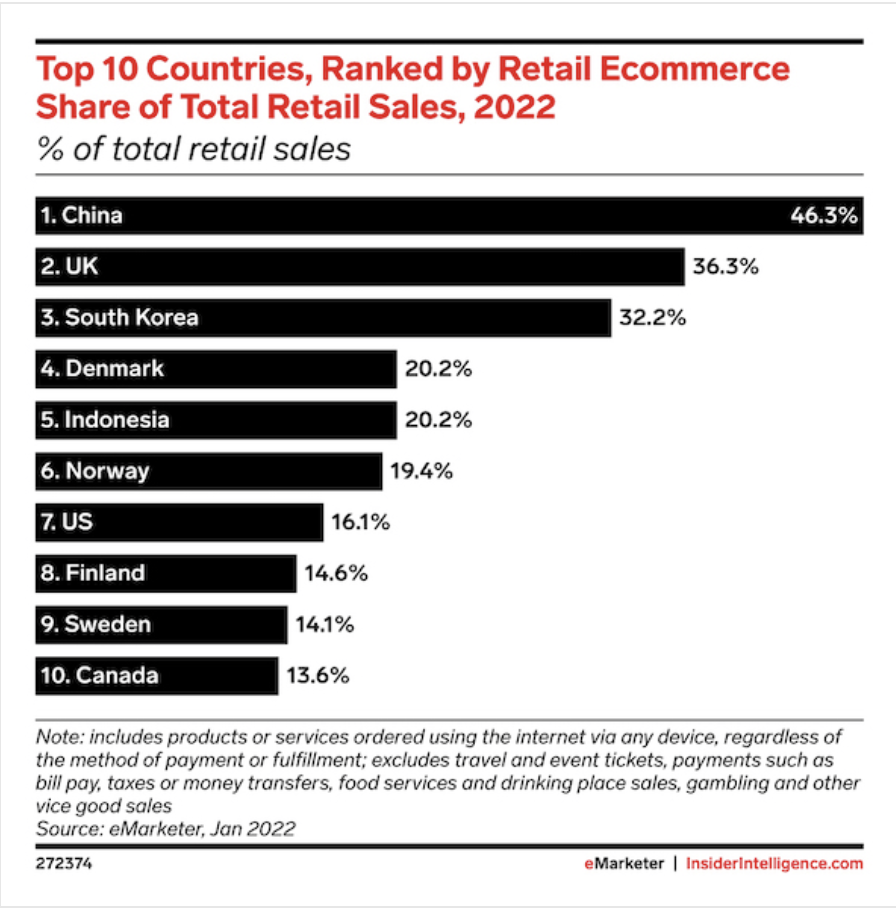eCommerce Penetration Levels in Countries Around the World
For much of the world the term retail apocalypse is a misnomer as shopping in brick and mortar stores is as popular as ever. For the foreseeable future China is the only county within reach of having its population purchase more than half of their goods online. One of the reasons for China’s dominance in eCommerce is that it is the home of some of the largest eCommerce companies in the world, the largest of which is Alibaba.
Alibaba generates a higher gross merchandise volume (GMV) than any eCommerce company in the world including Amazon. Alibaba had 1.3 billion annual active customers last year while Chinese eCommerce company JD.com had 552 million active accounts in the year ended September 2021.
Close to a decade ago the eCommerce penetration rate in the United States and China were close with eCommerce making up a 4.9% and 5% share in the United States and China respectively. Fast forward to now and China is way of the United States in terms of eCommerce penetration. One of the reasons eCommerce penetration isn’t quite as high in the United States as in other parts of the world is because the United States has a very developed retail store infrastructure featuring some of the best malls and stores in the world. Consumers are used to shopping in stores in North America and once the COVID-19 pandemic eased shoppers went back to their old habits of shopping in stores. Last year there were more store openings in the United States than store closings, for the first time since 1995. “Coming out of Covid, our foot traffic and sales across all of our properties have increased, even above pre-Covid levels,” said Chad Cress, chief creative officer for DJM, a real-estate investment, development and management firm.
Rounding out the top ten is Canada. One of the reasons eCommerce adoption is lower in Canada than in other countries is due to the cost of shipping. Alex Snider, co-owner of Queen Books, a bookstore, in Toronto says it costs $12 to ship a book across Canada which is significantly above the cost of shipping in the United States.
Another small business owner, Julie Yoo, owner of I Miss You Vintage Inc., a luxury consignment shop in Toronto had this to say about shipping products to customers: “I have strong feelings on the high cost of shipping and insurance with our national postal service. The rates are incredibly high compared to other postal services, and it’s a major disadvantage for Canadian small businesses selling online. We can’t stay competitive on the international market.” Because of these high prices it can cost Canadian consumers a lot more to order goods online than United States’ consumers which stifles the growth of eCommerce in the country.
Do you like this content? If you do subscribe to our retail trends newsletter to get the latest retail insights & trends delivered to your inbox


